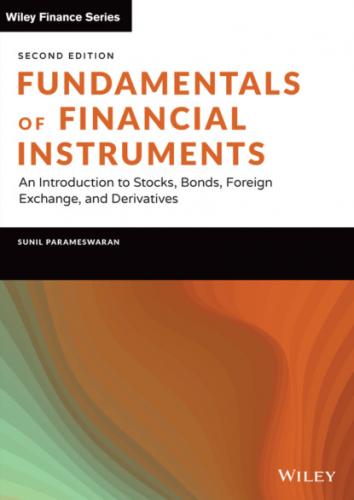If the investment is made for one quarter, both simple and compound interest will yield the same terminal value.
If the investment is made for less than a quarter, the simple interest technique will yield a greater terminal value.
If the investment is made for more than a quarter, the compound interest technique will yield a greater terminal value.
Simple interest is usually used for short-term or current account transactions, that is, for investments for a period of one year or less. Consequently, simple interest is the norm for money market calculations. The term money market refers to the market for debt securities with a time to maturity at the time of issue of one year or less. In the case of capital market securities, however – that is, medium- to long-term debt securities and equities – we use the compound interest principle. Simple interest is also at times used as an approximation for compound interest over fractional periods.
EXAMPLE 2.7
Take the case of Alex Gunning, who deposited $25,000 with International Bank for four years and nine months. Assume that the bank pays compound interest at the rate of 8% per annum for the first four years and simple interest for the last nine months.
The balance at the end of four years will be
The terminal balance will be
In the earlier case when interest was compounded for four years and nine months, the accumulated value was $36,033.20. Thus, simple interest for the fractional period yields an additional benefit of $19.76. The reason why we get a higher value in the second case is that for a fractional period simple interest will give a greater return than compound interest.
Effective Versus Nominal Rates of Interest
We will first illustrate the difference between nominal rates and effective rates using a numerical illustration and will then derive a relationship between the two symbolically.
EXAMPLE 2.8
ING Bank is quoting a rate of 8% per annum compounded annually on deposits placed with it, whereas HSBC is quoting 7.80% per annum compounded monthly on funds deposited with it. A naïve investor may be tempted to conclude that ING is offering better returns, as its quoted rate is higher. It is important to note, however, that the compounding frequencies are different. While ING is compounding on an annual basis, HSBC is compounding every month.
From our earlier discussion, we know that since ING is compounding only once a year, the effective rate offered by it is the same as the rate quoted by it, which is 8% per annum. However, since HSBC is compounding on a monthly basis, its effective rate will obviously be greater than the rate quoted by it. The issue is, is the effective rate greater than 8% per annum?
7.80% per annum corresponds to
Consequently, a rate of 7.80% per annum compounded monthly is equivalent to receiving a rate of 8.085% with annual compounding. The phrase effective annual rate connotes that effectively the investor who deposits with HSBC receives a rate of 8.085% compounded on an annual basis.
Thus, when the frequencies of compounding are different, comparisons between alternative investments ought to be based on the effective rates of interest and not on the nominal rates. In our case, an investor who is contemplating a deposit of say $10,000 for a year would choose to invest with HSBC despite the fact that its quoted or nominal rate is lower.
Note 2: It must be remembered that the distinction between nominal and effective rates is of relevance only when compound interest is being paid. The concept is of no consequence if simple interest is being paid.
A SYMBOLIC DERIVATION
Let us assume that an investor is being offered a nominal rate of r% per annum, and that interest is being compounded m times per annum. In the earlier example, since HSBC was compounding on a monthly basis, m was 12. The effective rate of interest i is therefore given by
We can also derive the equivalent nominal rate if the effective rate is given.
We have already seen how to convert a quoted rate to an effective rate. We will now demonstrate how the rate to be quoted can be derived based on the desired effective rate.
Assume that HSBC Bank wants to offer an effective annual rate of 12% per annum with quarterly compounding. The question is what nominal rate of interest should it quote?
In this case, i = 12%, and m = 4. We have to calculate the corresponding quoted rate r.
Thus, a quoted rate of 11.49% with quarterly compounding is tantamount to an effective annual rate of 12% per annum. Hence HSBC should quote 11.49% per annum.
PRINCIPLE OF EQUIVALENCY
Two nominal rates of interest compounded at different intervals of time are said to be equivalent if they yield the same effective interest rate for a specified measurement period.
Assume that ING Bank is offering 10% per annum with semiannual compounding. What should be the equivalent rate offered by a competitor, if it intends to compound interest on a quarterly basis?
The first step in comparing two rates that are compounded at different frequencies is to convert them to effective annual rates. The effective rate offered by ING is:
The question is, what is the quoted rate that will yield the same effective rate if quarterly compounding were to be used?
Hence 10% per annum with semiannual compounding is equivalent to 9.88% per annum with quarterly compounding, because in both cases the effective
